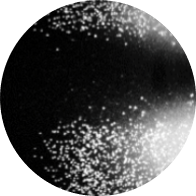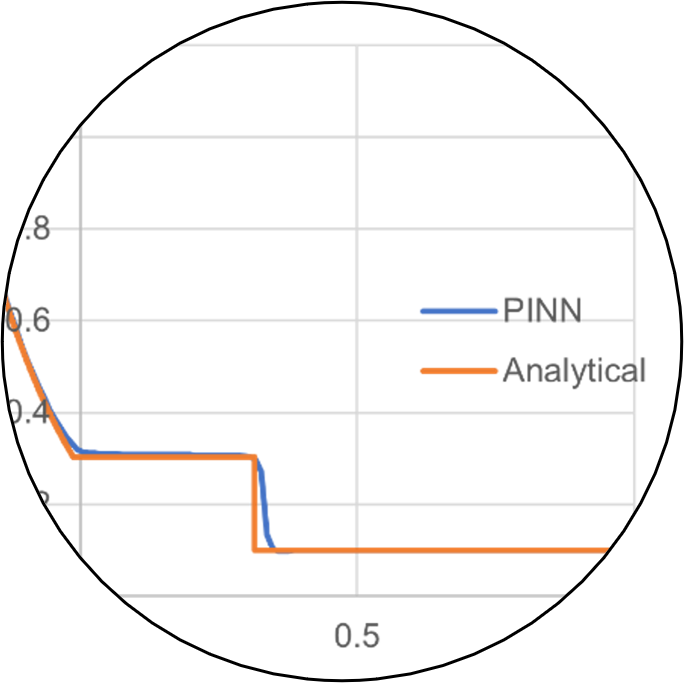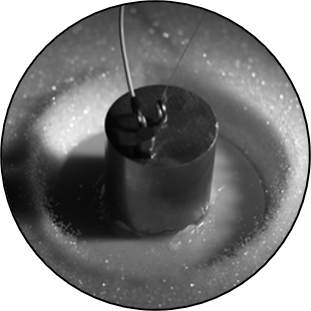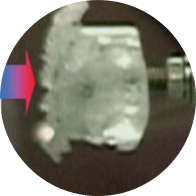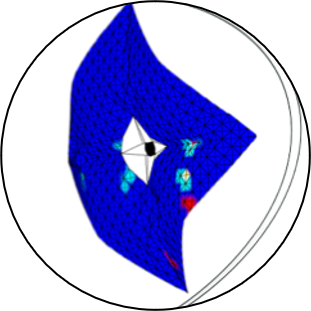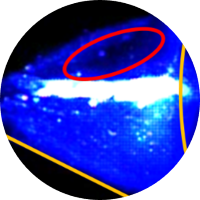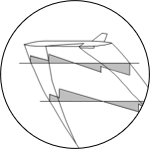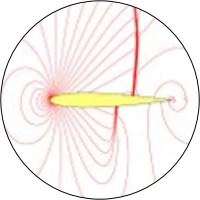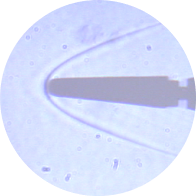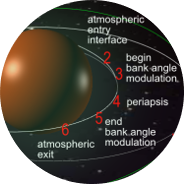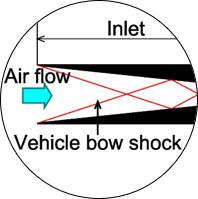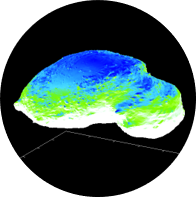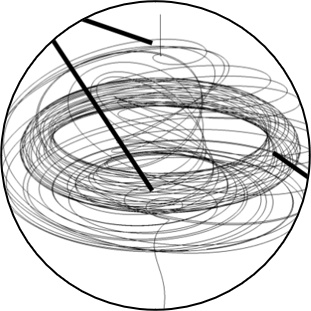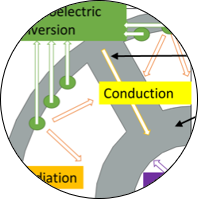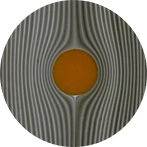Research themes at the Suzuki Laboratory
Each member of the Suzuki Laboratory is conducting research on a different theme. Research topics are wide-ranging, and include fluid dynamics, re-entry vehicles, computational fluid dynamics, theoretical fluid dynamics, planetary explorers, vortex phenomena, turbulence phenomena, and airflow control by plasma. The laboratory comprises students from the Department of Advanced Energy at Kashiwa Campus, and from the Department of Aeronautics and Astronautics at Hongo Campus. Our research is not limited to aerospace engineering and also includes a fusion with other fields. We are conducting research on various topics, including themes not listed on this page.
Overview of research themes (selected)
Ongoing research:
Next-generation atmospheric entry vehicle with flexible structure
Dynamic characteristics of granular flows
Study on dynamics of solar sails for novel LEO missions
Past projects:
Application of PINNs to supersonic fluid dynamics
Impact and penetration in granular materials for space exploration
Interaction between multiple bodies in hypersonic flow
Astrobiology at atmospheric entry of an icy body
Simulation of Mars aerocapture with a spin-type solar sail
Air and water counterflow jets in hypersonic flow
Mathematics of nonequilibrium relaxation
Plasma discharge for aerodynamic control of future hypersonic aircraft
Sonic boom of hypersonic aircraft
Shock wave identification from CFD using characteristic curves
Hypersonic aerothermodynamics of next generation spacecrafts
Optimization of aerodynamics and trajectory for Mars aerocapture
MHD power generation technology for scramjet engines
Aerodynamics and orbit of Itokawa-type asteroid with atmospheric entry
Flow around airfoil at low Reynolds number
Bifurcation of longitudinal vortices
Vertical take-off and landing vehicle concept
Heat shield with double core structure
Hele-Shaw experimental equipment
Ongoing research (selected)
Next-generation atmospheric entry vehicle with flexible structure, striving towards planetary exploration
The Suzuki Lab. is conducting joint research with JAXA on an atmospheric entry system employing a flexible aeroshell, as a next-generation system for returning from space. When a conventional atmospheric entry capsule passes through the atmosphere, it experiences strong heating, requiring substantial thermal protection and leading to an increase in capsule weight as well as other problems. Such conventional, "heat-resistant" type capsules face issues of safety and reliability in applications requiring high safety, such as when used as an emergency life vessel for the space station, or when transporting materials obtained from space exploration to the ground.
To solve these problems, we are conducting research on an atmospheric entry system using a flexible aeroshell, in order to develop a capsule that can return to the ground with almost no heating. In 2012, we conducted an atmospheric re-entry experiment using a sounding rocket at the Uchinoura Space Center (in Kagoshima, Japan), and demonstrated the safety of the capsule. Based on these results, in 2017 we conducted a demonstration test of a small capsule ("EGG") released from the space station. At present, we are conducting research aimed at applying our work to Mars rovers.

Observation of the dynamic characteristics of granular flows, including destruction and collision
Granular flow in a high-speed regime, such as particles swirling around the surface of an asteroid or a pyroclastic flow, is complex because of the collision and destruction of particles. At present, there are few examples of basic research on this topic, both in terms of experiments and numerical studies, making it difficult to accurately predict real phenomena.
In order to investigate the characteristics of granular flow in this high-speed regime, our laboratory has independently established an experiment to observe the dynamics of particles when projectiles are injected into a uniform particle space at high speed. In addition to qualitatively analyzing the effects of projectiles and particles’ material and velocity on the flow field, we are also working on visualizing the inside of particle fields using laser sheets.
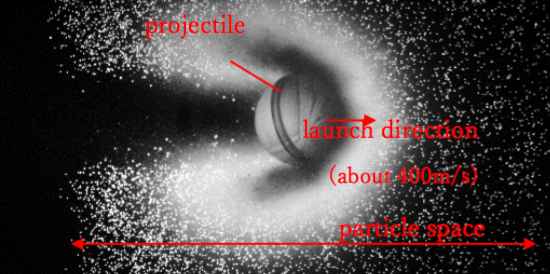
Study on dynamics of solar sails with aerodynamics and solar radiation pressure for novel LEO missions
Solar sails are thin, lightweight structures which provide satellite propulsion via solar radiation pressure, without using any fuel. Solar sails traditionally operate in deep space, beyond Earth orbit. Their utilization in low-Earth orbit (LEO), the most valuable and congested region of space, appears promising yet has received limited attention. The objective of this research is to advance the maturity of solar sails for such applications. Simulation is used as an alternative to in-space experimentation. Solar sails with a pyramidal shape were identified as being especially well-suited to LEO applications, based on an extensive review of the literature.
As a first step, a high-fidelity simulator of the LEO environment was developed. The numerical platform considers the unique modelling requirements of pyramidal solar sails in this region, and the impact of Earth radiation pressure and self-illumination on the dynamics of LEO solar sails was assessed for the first time. As a second step, the simulator was used to shed light on the fundamental orbit and attitude dynamic characteristics of LEO solar sails. As a third step, based on the knowledge gained on the dynamics, novel mission concepts for LEO solar sails were designed and evaluated.

Past projects (selected)
Interaction between multiple bodies in hypersonic flow
As a frequently encountered problem in both natural events and man-made systems, the interaction between multiple bodies in hypersonic flow is of great interest among researchers. A primitive step towards understanding such phenomena, this study focuses on the aerodynamic forces and the resulting relative trajectory of a two-sphere system in hypersonic flow, using a numerical model which combines the blast wave analogy and the Newtonian method. Assuming a situation where the spheres are initially touching, the relative motion of the trailing sphere is found to follow one of three basic patterns: (1) surfing on the top half of the leading sphere’s bow shock; (2) remaining inside the leading shock until the far wake; or (3) leaving the bow shock from the beginning. Several potential parameters for determining the trajectory pattern are examined through principal component analysis (PCA), and the initial position angle between the two spheres is found to be the dominant one. To validate the results from the numerical model, a series of wind tunnel experiments on the separation process of two identical spheres were conducted (see figure below). The observed trajectory shows good agreement with the predictions of the above model. Further validation by computational fluid dynamics (CFD) indicates that the numerical model performs well in regions without strong shock-shock interactions.
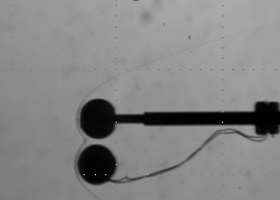
Application of PINNs to supersonic fluid dynamics
Deep learning has reformed the way of performing classification, pattern recognition, and regression tasks in various application areas, such as image recognition and natural language processing. Recently, a new class of neural networks, named physics-informed neural networks (PINNs), has arisen as a promising method to solve scientific computing problems governed by differential equations. Unlike traditional numerical methods, which utilize discretization schemes to evaluate derivatives, PINNs are trained on scattered sample points with PDEs encoded into the loss function of the neural networks. Therefore, it is a mesh-free method. In this research, we applied PINNs to compressible flow problems which contain discontinuities (shock waves), such as the Sod problem and the oblique shock wave problem, to investigate their capability of solving supersonic fluid dynamics problems.


Numerical modeling of impact and penetration in granular materials for lunar and planetary exploration
In recent years, many landing missions have been conducted to lunar and planetary bodies whose surfaces are covered with granular material called regolith. The behavior of granular materials is complicated because each individual particle behaves like a solid, while a group of particles behaves like a fluid. In addition, it is difficult to replicate actual space exploration environments, such as microgravity and vacuum conditions. Therefore, numerical simulations offer a valuable means of understanding the phenomena, and it is important to feed back this knowledge to the design of spacecraft.
Impact and penetration phenomena of granular materials have been studied in the field of planetary science, but there are few studies on numerical modeling of contact and impact problems with man-made objects such as spacecraft.
In this laboratory, we are developing a numerical simulation method to understand the impact and penetration characteristics of granular materials. We are conducting a wide range of research from fundamental studies on the behavior of granular materials to applied studies such as impact simulation of lunar lander legs, with a view to future lunar and planetary exploration.

Physics and astrobiology during atmospheric entry of an icy body
When an icy object enters an atmosphere, various chemical reactions occur due to aerodynamic heating. We believe that the substances generated by this process may have become precursors to life on the ancient Earth, and we are conducting research using experimental and theoretical methods to elucidate this.
Research on Mars aerocapture using a spin-type solar sail via coupled analysis of aerodynamics, structure, attitude, and orbit
In recent years, membrane structures such as solar sails and thin-film solar cells have attracted attention for use in deep space probes. Membrane structures are excellent in terms of lightness and storability, but they are vulnerable to external forces, which can induce structural deformation and attitude changes. For this reason, until now they have been used only in interplanetary space, where they are free from large external forces. However, we are considering whether in the future, membrane structures could also be used in the vicinity of planets with atmospheres such as Mars and Jupiter, to provide deceleration by harnessing atmospheric drag in missions involving aerocapture and aerobraking.
In order to enable studies on such missions, in this research we have established a method for attitude and orbital analysis that considers the structural deformation of the membrane due to aerodynamic forces, i.e., a method for coupled analysis of aerodynamics, structure, attitude, and trajectory. We implemented this method into a simulator, and simulated Mars aerocapture using a spinning solar sail. We found that, assuming the solar sail is similar to IKAROS, launched by JAXA in 2010, there is no solution that provides the amount of deceleration required for insertion into orbit around Mars without burning the membrane structure via aerodynamic heating. However, by reducing the mass of the satellite body to CubeSat class (10kg) and increasing to 5kg the mass of the weights mounted on the four corners of the membrane, we have found a solution that satisfies both of the above conditions while maintaining the membrane structure. In other words, we have demonstrated the feasibility of a miniature Mars orbiter that uses a relatively simple membrane structure called a solar sail to decelerate using only atmospheric drag and enter into Mars orbit.
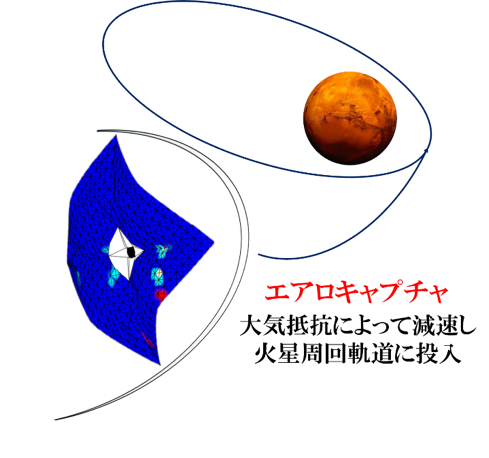
Research on the effect of air and water counterflow jets on hypersonic flow fields
If an object moves through air faster than the speed of sound, a compression wave called a shock wave is generated in front of it, behind which the air becomes hot and high-pressured, exerting a large load on the object. When a jet is injected against the flow direction (counterflow jet) from a stagnation point in front of the object, an oblique shock wave is formed at the jet tip. It is known that in such a case, the air drag acting on the aircraft and the aerodynamic heating near the stagnation point are reduced. This is called the jet spike effect.
If the spike is not long enough, the oblique shock wave will crash into the fuselage, causing a sharp rise in the pressure and temperature. High jet pressure is required when using a counterflow jet to obtain a sufficient spike length. Since liquids have much higher densities than gases, their large inertia can be expected to extend the spike length.
Although many experimental and numerical studies have been conducted on gas counterflow jets, there have been few studies on liquid counterflow jets. In particular, the details of the flow field have not yet fully been elucidated. In this study, in order to better understand the effect of liquid counterflow jets on hypersonic airflow, wind tunnel experiments were conducted focusing on the following items.
- The flow fields created by gas and liquid counterflow jets are visualized and compared using the Schlieren method.
- The cross-section of the liquid counterflow jet is visualized using the laser sheet method.

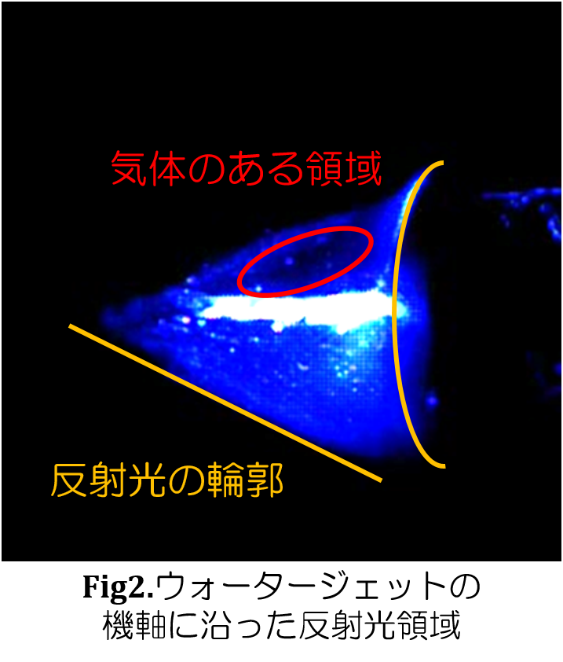
Mathematical and numerical comprehension of nonequilibrium relaxation by using kinetic equations and its extension to reactive and relativistic gas

Airflow regulation technology for aerodynamic control of future hypersonic aircraft using plasma discharge
In recent years, in the aviation field, research on aerodynamic control technology using electromagnetic forces has attracted attention. Compared to conventional aerodynamic control devices such as flaps, an airflow control device using electromagnetic forces presents unique advantages such as:
- robustness against failure because it has no moving parts.
- a short response time from switch-on to actuation.
These features are especially important for making future hypersonic aircraft, which fly at high speeds, safer.
A plasma discharge in hypersonic airflow is expected to present unusual properties due to the rapid flow speed, and has been little studied at present. In order to employ plasma discharge for aerodynamic control in the future, this study aims to investigate the effect of discharge plasma on hypersonic flow via basic research.
Based on the research conducted so far, it has been found that an aerodynamic control moment can be generated in a very short time by employing a plasma discharge at the surface of a hypersonic plane, and this is envisaged as an auxiliary device for the aerodynamic control of future hypersonic aircraft.


Research on the sonic boom of hypersonic aircraft
A sonic boom is an acoustic phenomenon caused by shock waves reaching the ground. It is the most important issue facing the introduction of next-generation high-speed transport aircraft. The figure below shows the propagation process of a sonic boom. The shock waves generated from the fuselage are consolidated by a nonlinear effect, and form a pressure waveform in the far field known as an N-wave. As a result, due to the sudden increase in pressure, two explosion sounds (sonic booms) are heard on the ground.
Research on sonic booms is being conducted in several countries around the world, but studies in the hypersonic region are few, and their propagation characteristics remain uncertain. The flight altitude of hypersonic aircraft is higher than that of supersonic aircraft, and the shock wave angle is smaller because the Mach number is larger. In addition, nonlinear effects are stronger in hypersonic flows than in supersonic ones, and they may behave differently from supersonic flows. On this basis, hypersonic aircraft may be able to solve the sonic boom problem more easily than supersonic ones.
In this research, we focus on the sonic boom of hypersonic aircraft and conduct research using both numerical analysis and experiments. In our numerical analysis, we consider both a uniform atmosphere and a real atmosphere, and conduct a full-space simulation from an altitude of 25 km down to the ground (see the figure below). We evaluate the sonic boom characteristics of hypersonic aircraft, and examine the effectiveness of simple estimation methods such as Whitham's modified linear theory and the waveform parameter method. In our experiments, we acquire the near-field pressure waveform in a hypersonic airflow (Kashiwa Hypersonic and High-Enthalpy Wind Tunnel, Mach 7), and compare it with the numerical analysis results.
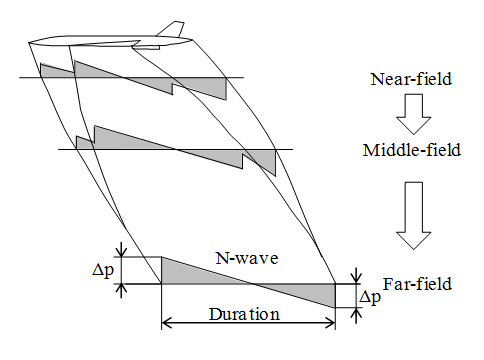
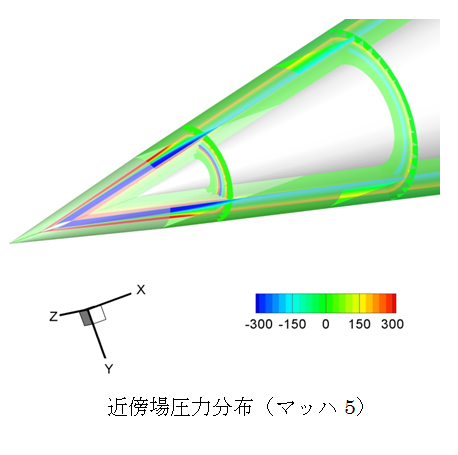
Method for shock wave identification from CFD analysis results using characteristic curves
A shock wave always arises in front of an object moving faster than the speed of sound (see figure below). This is a wave generated by the accumulation and reinforcement of sound waves. Since the air behind it gains a high temperature and high pressure, during the design of supersonic passenger aircraft it is important to select an aircraft shape which minimizes such waves. However, visualizing shock waves is more difficult than one might imagine. The main reason is that waves other than shock waves are also present in the flow. In other words, there are many confusing waves that look like shock waves but are not shock waves. Therefore, this research starts with the pursuit of the exact reason why a shock wave is a shock wave.
1) Characteristic curve
What is a shock wave? Their mathematical definition is a "collision of characteristic curves". A characteristic curve is a concept that is important when dealing with wave phenomena in compressible fluid dynamics, and a special physical quantity called a Riemann invariant is conserved along the curve. Where these curves collide, the Riemann invariants are no longer conserved, and the conservation relationship breaks down. This is what shock waves are.
2) Linear differential equations and critical lines
So, how do we find collisions between the characteristic curves? The answer lies in linear differential equations, which every science student learns about. We consider the differential equations of the characteristic curves, and extract only those lines (called critical lines) where their solution curves converge. If the equation is linear, then the critical lines can easily be found from the coefficient matrix of the equation.
3) Shock wave detection
To summarize, it is possible to extract a shock wave by (1) formulating an equation for a characteristic curve and (2) determining its critical line, which is an extremely simple but mathematically rigorous operation. The figure below shows an example of a detection. This method makes it possible to clearly identify shock waves which could not previously be identified in a clear form. We are currently conducting research to extend this method to a wider range of applications.


Hypersonic aerothermodynamics, next generation spacecrafts, and their interactions with environments
Long-range intercontinental transportation of cargo and passengers has produced a demand for cost-effective hypersonic technology, which can provide the maximum payload for a given range and the shortest possible travel times. For a given range, in terms of average fuel consumption, the emphasis is on a technology capable of withstanding all the aerodynamic and thermal loads present in the flight environment. A thermal protection system needs to be developed which can mitigate the impact of exposure to hot gases by acting as a blanket to the inner structure and thereby reduce the likelihood of hazards, while minimising the required mass. The aerodynamic heating of a vehicle traveling at hypersonic speeds is a function of its geometry and trajectory. Hence, hypersonic studies have long been a focal point of research in this field, and will continue to attract the attention of researchers from around the globe, owing to new and critical challenges being encountered in the hostile environments of such flights.
The research we are currently pursuing aims to establish an innovative geometry for future vehicles traveling at hypersonic speeds, specifically for intercontinental commercial travel, and eventually for extension to trans-atmospheric missions. The study focuses on aerodynamic and thermodynamic perspectives in order to yield a futuristic fuel-efficient configuration. This is planned to be done through both experimental and computational investigation.
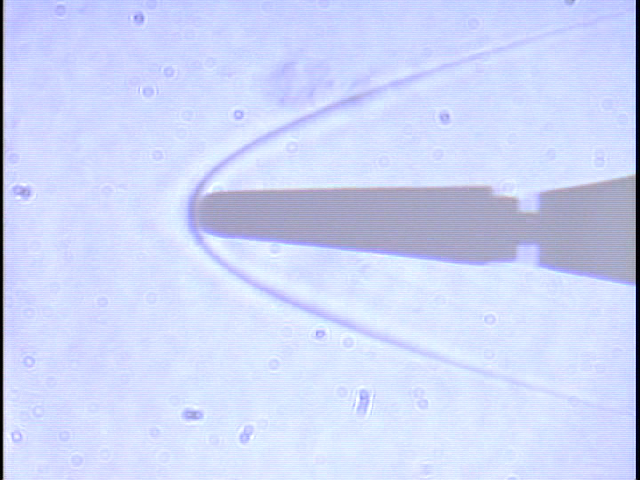
Research on simultaneous optimization of aerodynamic shape and trajectory control of satellite for Mars aerocapture
Mars is a high-interest exploration target because it presents several features of scientific interest. To enable Mars exploration, the establishment of low-cost transportation technology is urgently needed. While conventional orbital insertion methods with chemical propulsion present drawbacks from the viewpoint of propellant mass, aerocapture simply uses aerodynamic drag to decelerate a spacecraft, which can greatly reduce the required fuel. In order to make the most of this mass advantage, robustness is needed against various uncertainties, and at the same time sufficient deceleration should be performed while minimizing the heat load. For a spacecraft destined for aerocapture, the optimum design problem is different from that of aircraft, etc., in which cruising conditions exist. It boils down to resolving, at the same time, the problem of what kind of aerodynamic shape should be chosen, and what kind of flight trajectory is desired.
Therefore, we treated the geometric variables that determine the aerodynamic properties and the time-dependent control variables that determine the flight path as a set, and optimized both at the same time. As a result, we were able to obtain a solution that adequately satisfies the constraints and can greatly improve the value of each objective function compared to the case where only the flight trajectory is optimized. As well as elucidating the aerodynamic shape and trajectory control characteristics that maximize the weight advantage, we were able to clarify the trade-off relationship between weight merit maximization and robustness against uncertainty.
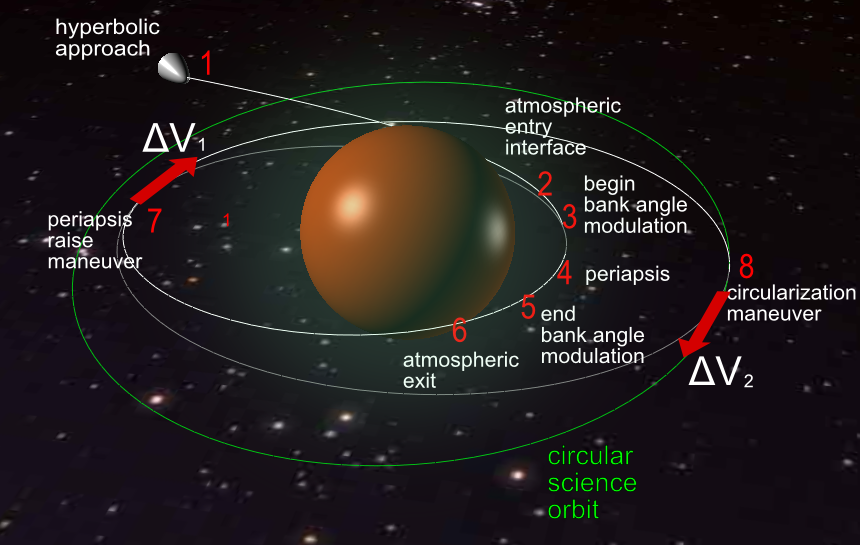
Numerical analysis for application of MHD power generation technology to scramjet engines
A scramjet engine that can operate during hypersonic flight is considered indispensable for the development of a fully reusable spaceplane. However, it is difficult for scramjet engines to respond to varying airflow conditions. For example, if the engine’s structure is simplified and its shape is fixed, then the engine can easily be cooled, and high performance can be achieved under the design condition. On the other hand, optimal conditions cannot be reached in airflow that deviates from the design condition, such as during acceleration.

In response, we have proposed a scramjet engine system that employs MHD power generation technology as shown in the figure below, and conducted numerical analysis. Specifically, we have devised a system in which an MHD generator installed in the intake is used to control the inlet flow via the Lorentz force generated in the channel, while an MHD accelerator installed downstream of the combustor accelerates the flow using an external electromotive force in order to recover the flow velocity lost in the intake. Numerical analysis of this system confirmed that the resulting scramjet engine can be operated over a wider range of Mach numbers.

Research on hypersonic aerodynamic orbital characteristics of an Itokawa-type asteroid assuming atmospheric entry
The JAXA planetary explorer Hayabusa, which was launched in May 2003, conducted a detailed survey of asteroid 25143 Itokawa. Itokawa is considered to be among the most common, plain vanilla asteroids ever studied. It is shaped like a sea otter, as can be seen in Fig. 1. Compared to artificial objects such as space shuttles and aircraft, which follow a design plan, it is more difficult to predict the aerodynamic characteristics and flight behaviour of such natural objects, and research in this area appears to be limited.
In response, in this research, using the asteroid Itokawa as a model case, we are investigating the aerodynamic orbital characteristics of the asteroid Itokawa during hypersonic flight, assuming atmospheric entry. Unlike aircraft, the asteroid Itokawa has no front nor back during flight. Therefore, it is necessary to know the aerodynamic characteristics in all attitudes. However, given the required time and cost, it is not realistic to investigate the aerodynamic characteristics in all attitudes by experiments or Computational Fluid Dynamics (CFD). Therefore, in this study we use a simple aerodynamic estimation method called Newtonian theory for aerodynamic analysis, with low computational cost. By comparing the results with those obtained by CFD and wind tunnel experiments, we confirmed the effectiveness of Newtonian theory for the conditions in this study. Then, using the estimation results as a database, orbital analysis will be performed to investigate the flight characteristics of the asteroid Itokawa in the Earth's atmosphere.

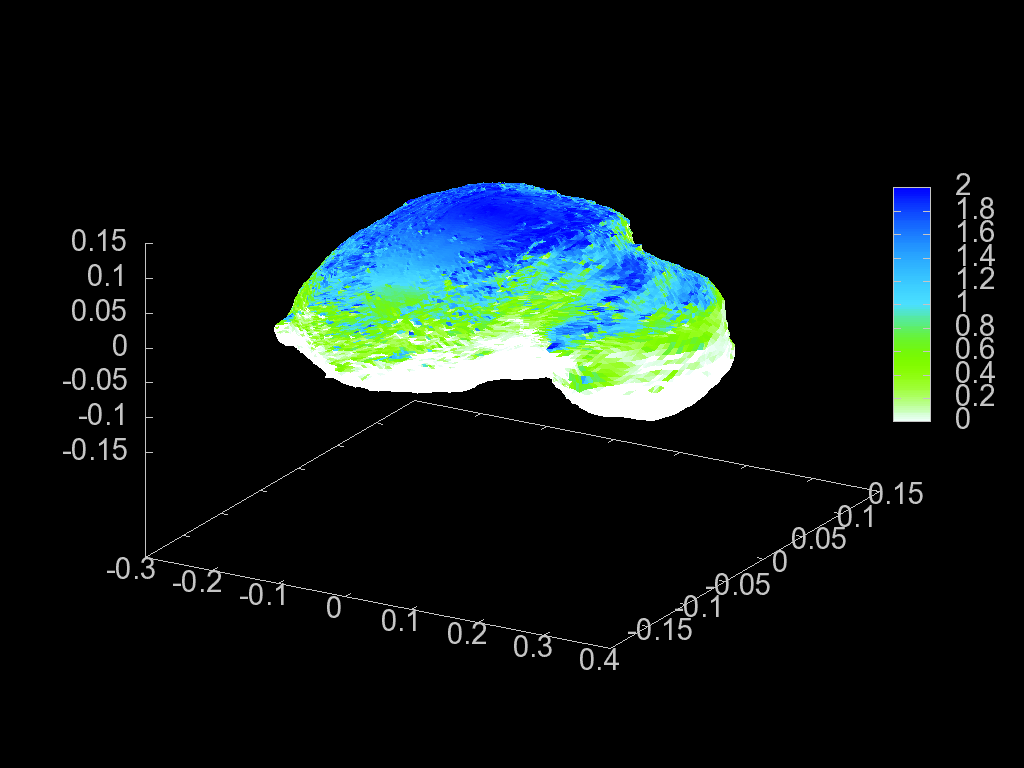
Research on flow around an airfoil in the low Reynolds number regime
Aided by recent rapid technological advancements, the development of small unmanned aerial vehicles (UAVs) or drones is progressing for application to remote sensing at disaster sites and in extreme environments. Compared to passenger planes and other aircraft that we are more familiar with, UAVs are characterized by a "very slow" flying speed and a "small" size. For this reason, the nature of the airflow around the fuselage will change greatly from that around a conventional airplane. In some cases, the lift generated by the wings may significantly be reduced, causing the aircraft to stall. Hence, understanding the characteristics of such airflows is very important to promote the development of small drones. In this research, we aim to investigate the flow around the wings of such "very slow" and "small" aircraft using numerical simulation.

Research on the bifurcation of longitudinal vortices
Vortex breakdown is a phenomenon in which the structure of a longitudinal vortex changes abruptly, and its physical mechanism is still poorly understood. In this research, the vortex breakdown phenomenon is treated as a geometric bifurcation of longitudinal vortices, and the bifurcation pattern of the flow field is constructed from the viewpoint of dynamical system theory.
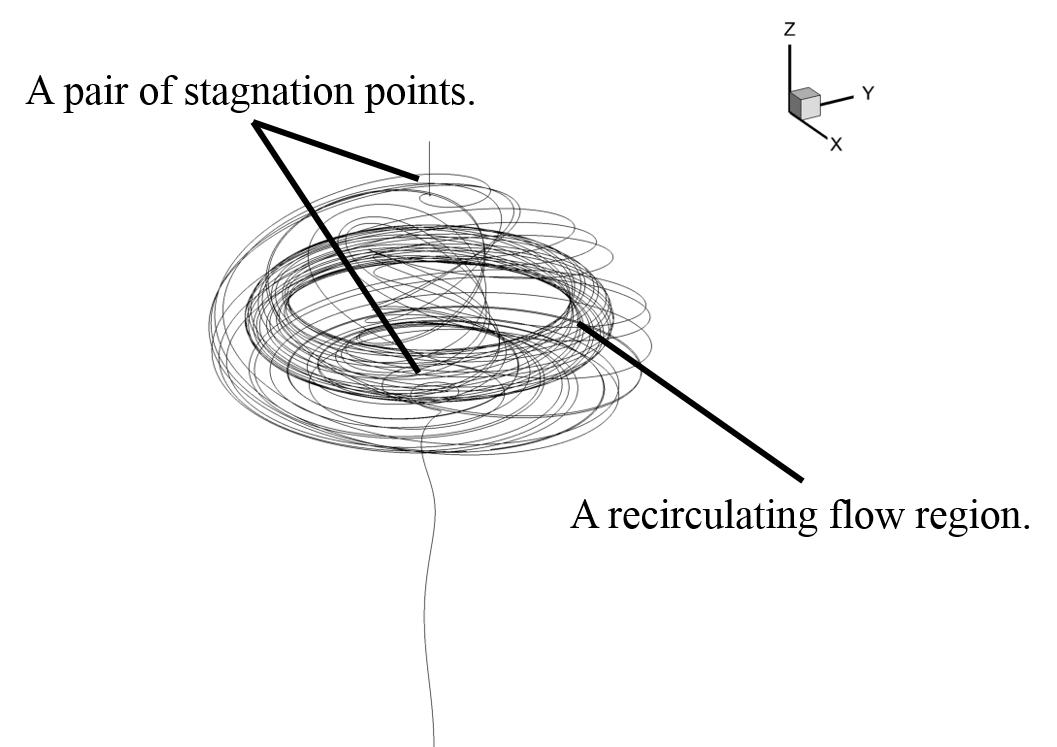
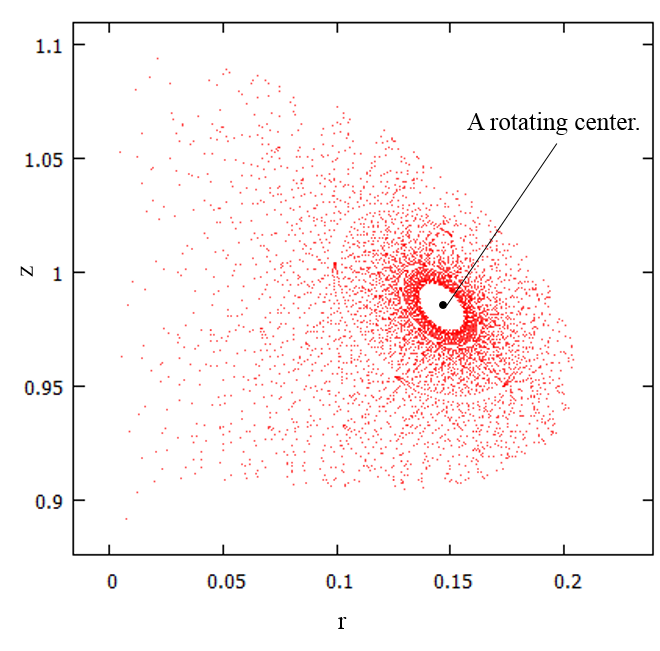
Concept study on a reusable two-stage vertical take-off and landing space transport vehicle
Reducing the cost of transporting goods and people to space is important to promote space development and grow the space industry. Reusable Launch Vehicles (RLVs) have the potential to significantly reduce space transportation costs, and many concepts have been devised from the past to the present. Single-Stage-to-Orbit (SSTO), in which the launch vehicle is used continuously from launch to return without separation, has been studied as the ideal form for an RLV, but has not yet been realized as it has not achieved the strict mass reduction requirements. For this reason, Two-Stage-to-Orbit (TSTO), which is a two-stage extension of SSTO into a more realistic format, is currently the mainstream of RLV research. Among TSTO-RLVs, SpaceX's concept of repurposing and reusing existing disposable rocket technology has attracted attention. However, if existing systems are simply converted into RLVs, which are more expensive than disposable airframe systems, there are concerns that the cost of the growing number of RLVs will increase.
In response, in this study we proposed a system that can reduce the cost of existing disposable rockets when used as a vertical take-off and landing type TSTO-RLV, compared its competitiveness with existing systems, and assessed whether it could act as a substitute for SSTO. We demonstrated the possibility of constructing a system with a low cost equal to or less than that of SSTO, employing either one of two models (see figure below): a reusable orbiter with a small disposable booster in a built-in central shaft, and a reusable orbiter with a small disposable booster installed as the lower stage.
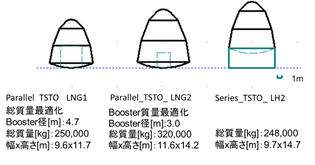
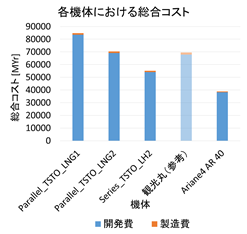
Research on a heat shield system with a double core structure
Hypersonic aircraft are exposed to severe aerodynamic heating. A Thermal Protection System (TPS) is required to protect the aircraft in order to successfully complete the mission. A TPS plays two roles: (1) it reduces the heat inflow to the fuselage, and (2) improves the heat insulation performance of the fuselage. However, since the former involves changing the shape of the aircraft, which may conflict with aerodynamic requirements such as low air drag, it is not always possible to implement effective countermeasures. In response, in this research we proposed a TPS with a double-shell structure for the leading edge, comprising three parts: an "outer plate", "poles", and an "inner plate".
The temperature distribution varies greatly depending on where the "poles" are installed, and two heat transfer modes within the double-shell structure were considered: (1) radiant heat outflow from the backward-facing side, and (2) radiant heat transfer in the cavity part. We found that high heat resistance performance of the double-core TPS can be obtained by arranging the "poles" in a well-balanced manner.


Experiments in fluid dynamics using Hele-Shaw experimental equipment
In our laboratory, various research themes related to fluid dynamics are being investigated. In particular, we have designed, fabricated, and performed experiments using a Hele-Shaw apparatus that can generate a potential flow. For more details, please consult the report below.








